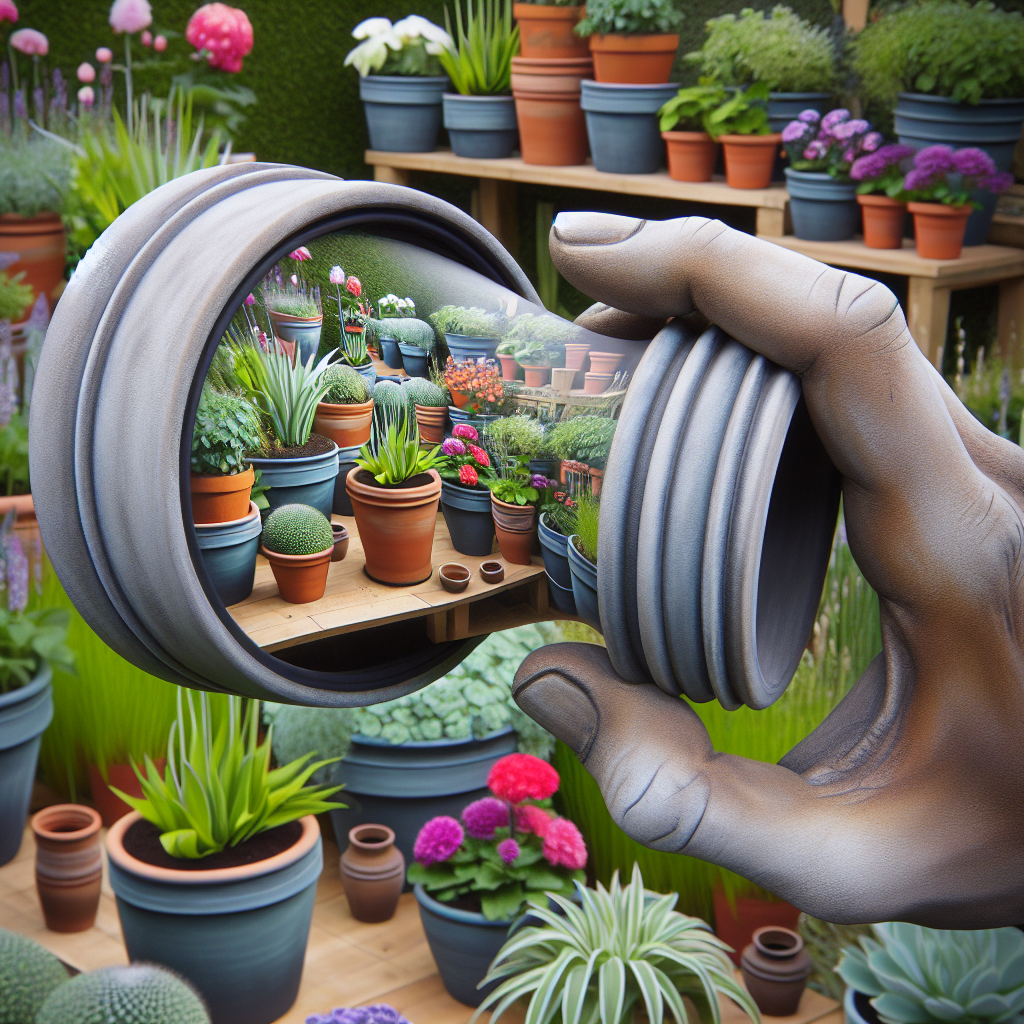Master the Art of Container Gardening with These Expert Tips
Container gardening has surged in popularity, and for good reason. Whether you have limited space, poor soil quality, or just want to add some versatility to your garden setup, container gardening offers a way to cultivate a variety of plants in confined spaces. By mastering the art of container gardening, you can transform any patio, balcony, or small yard into a lush oasis. Here’s how to get started with some expert tips.
Why Choose Container Gardening?
Container gardening is ideal for urban living or spaces where traditional gardening isn’t feasible. Here are some compelling reasons to consider it:
- Space Efficiency: Even if you have no garden space at all, you can still grow herbs, flowers, and even vegetables on a sunny windowsill.
- Soil Control: You have complete control over the soil type and its pH levels.
- Mobility: Containers can be moved to capture sunlight or shade as needed.
- Aesthetics: Attractive pots and planters add visual appeal and can complement your home’s decor.
Selecting the Right Containers
The first step in container gardening is choosing suitable containers.
- Size Matters: Ensure that your container is large enough for root development. A pot that’s too small will restrict growth and require more frequent watering.
- Material Considerations: Clay pots are porous and allow better air circulation but dry out quickly. Plastic pots retain moisture longer but may not provide as much aeration for the roots.
- Drainage Is Key: Proper drainage prevents waterlogging, which is detrimental to most plants. Opt for containers with drainage holes or drill some if necessary.
Choosing the Ideal Soil
Not all soils are created equal when it comes to container gardening.
- Potting Mix Over Garden Soil: Garden soil is too dense for containers and doesn’t drain well enough. Go for a high-quality potting mix designed specifically for containers.
- Add Organic Matter: Incorporate compost or well-rotted manure to improve nutrient content.
- Avoid Compaction: Don’t pack down the soil too tightly; roots need room to breathe.
Plant Selection
Which plants should you choose? Almost anything can be grown in a container if given proper care, but some plants thrive more easily than others.
Best Plants for Container Gardening:
- Herbs: Basil, thyme, mint
- Vegetables: Tomatoes, peppers, lettuce
- Flowers: Petunias, geraniums, marigolds
Consider Light Requirements:
Different plants require varying amounts of sunlight.
- Full Sun Plants: Need at least six hours of direct sunlight per day (e.g., tomatoes).
- Partial Shade Plants: Require about 4-6 hours of sun (e.g., spinach).
- Shade-Tolerant Plants: Do well with less than 4 hours of direct sunlight (e.g., ferns).
Watering Techniques
Proper watering is crucial in maintaining healthy container gardens.
- Consistent Moisture: Check your containers daily during hot weather—containers dry out faster than ground beds.
- Watering Deeply: Ensure that water reaches the root zone by watering until it drains out from the bottom.
- Avoid Overwatering: Too much water can lead to root rot; make sure excess water can freely drain away.
Fertilization Strategies
Plants in containers exhaust their nutrients faster due to limited soil volume.
- Slow-release Fertilizers: These offer convenience as they break down over time providing nutrients gradually.
- Liquid Fertilizers: Ideal for quick nutrient uptake but need more frequent application.
- Organic Options: Compost tea or fish emulsion adds necessary nutrients while being environmentally friendly.
Pruning & Maintenance
Regular maintenance keeps your container garden at its best:
- Pruning: Helps manage plant size and encourages new growth.
2 Deadheading: Removes spent blooms which promotes continued flowering.
3 Pest Control: Regularly inspect your plants for signs of pests like aphids or spider mites and take appropriate measures—natural pesticides are often sufficient.
Seasonal Care Tips
Container gardens need different care across seasons:
1 Spring Preparation: Refresh old soil by mixing in compost or new potting mix—start planting early bloomers.
2 Summer Care: Increase watering frequency—mulch topsoil helps retain moisture.
3 Fall Transition: Clean up fallen debris—consider moving sensitive plants indoors.
4 Winter Protection: For perennials in non-freezing climates use frost cloths—in colder regions bring pots inside.
Common Challenges & Troubleshooting Tips
Every gardener faces hurdles; here’s how you might tackle some common issues:
1 Yellow Leaves: Often signifying overwatering—reassess drainage system.
Wilted Plants: Usually indicates underwatering but also check roots may be bound.
Slow Growth Sometimes inadequate nutrition—a balanced fertilizer might help.*
Experiment & Adapt:
Gardening thrives on experimentation! Don’t hesitate modifying techniques suiting own conditions best because ultimately personal touch transforms endeavor into joyful rewarding pursuit!
By incorporating these expert tips into practice sure yield thriving lush sanctuary elevating space significantly regardless constraints initial apprehensions!













